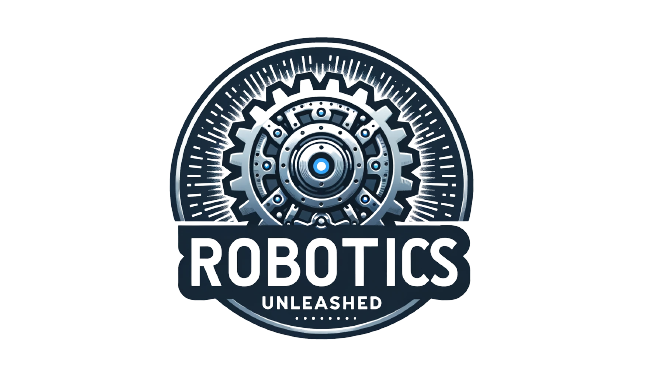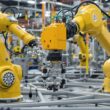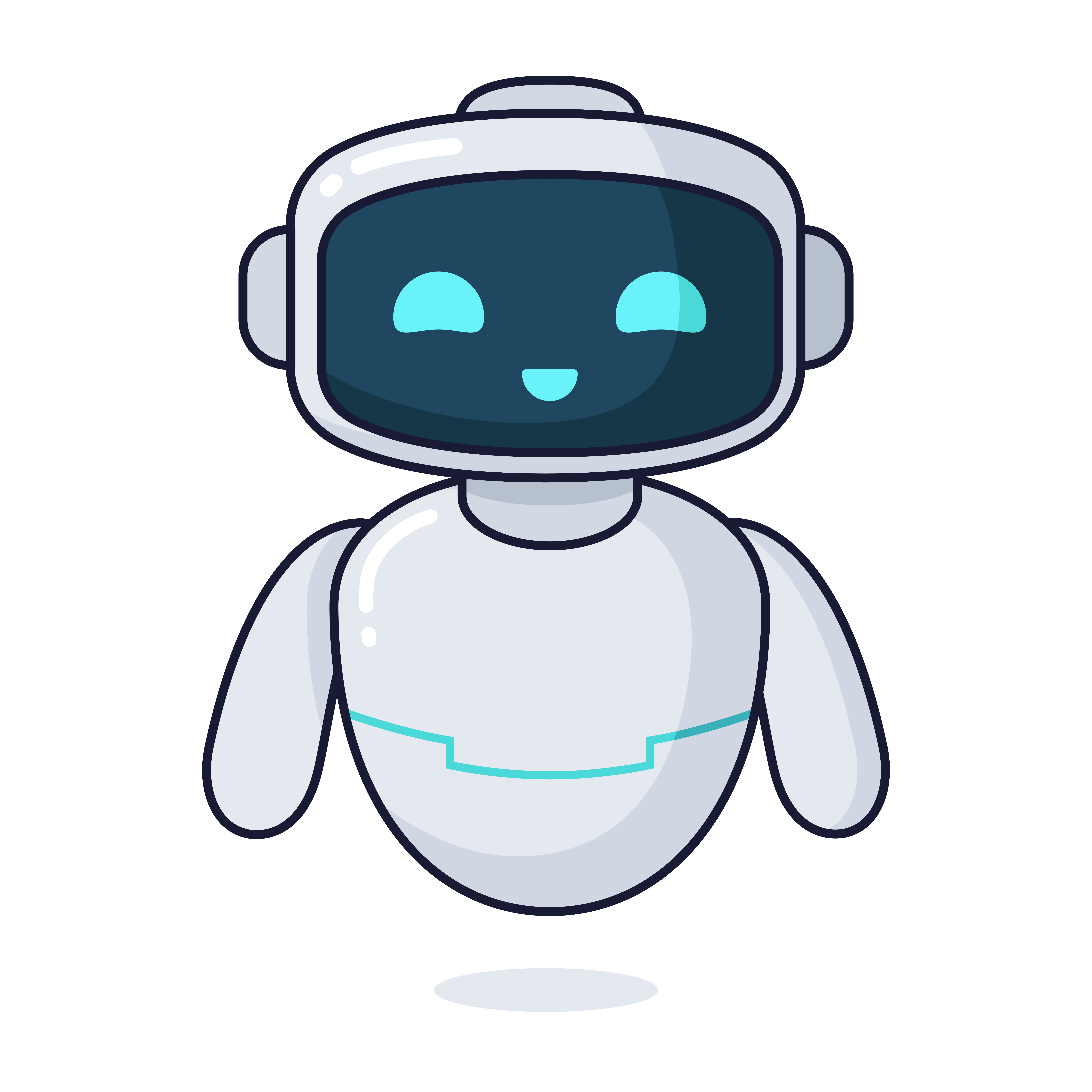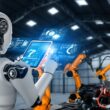The robotics industry is poised for transformative growth by 2025, with breakthrough technologies reshaping how machines interact with humans and perform complex tasks. From AI-powered systems to collaborative robots, these robotics trends 2025 represent a technological leap that will fundamentally alter manufacturing, healthcare, agriculture, and everyday life.
Key Takeaways
- AI integration will drive a 29.4% CAGR in the robotics market, reaching $64.74 billion by 2029
- Collaborative robots (cobots) will represent 35% of all robot sales by 2027, transforming human-machine partnerships
- Digital twin technology adoption will grow at a 61.3% CAGR, enabling virtual testing with real-world benefits
- Autonomous Mobile Robots will handle 25% of last-mile deliveries by 2030
- The shift to robotics will transform employment, with 12 million new roles created despite 20 million manufacturing jobs lost
Revolutionizing Industry: The AI-Powered Robotics Explosion
The integration of artificial intelligence with robotics represents the most significant advancement in industrial automation. The AI robotics market is projected to grow at a remarkable 29.4% CAGR, reaching $64.74 billion by 2029. This growth is driven by AI’s ability to enable robots to optimize warehouse paths, predict maintenance needs, and adapt to dynamic environments.
Companies like Ocado have already implemented logistics cobots that use AI to improve operational efficiency. These systems can adapt to changing conditions without extensive reprogramming, representing a major shift from traditional robotics. Physical AI robots trained in virtual simulations, such as Siemens’ SIMATIC Robot Pick AI, show marked improvements in real-world adaptability.
The reduced reliance on pre-programming is a game-changer for industries requiring flexibility. By 2025, warehouse operations using AI-driven robotics are expected to see productivity increases of up to 30%. Amazon’s AI-driven inventory systems provide a compelling case study of these benefits in action, with robots that continuously learn from their environment to optimize picking and packing operations.
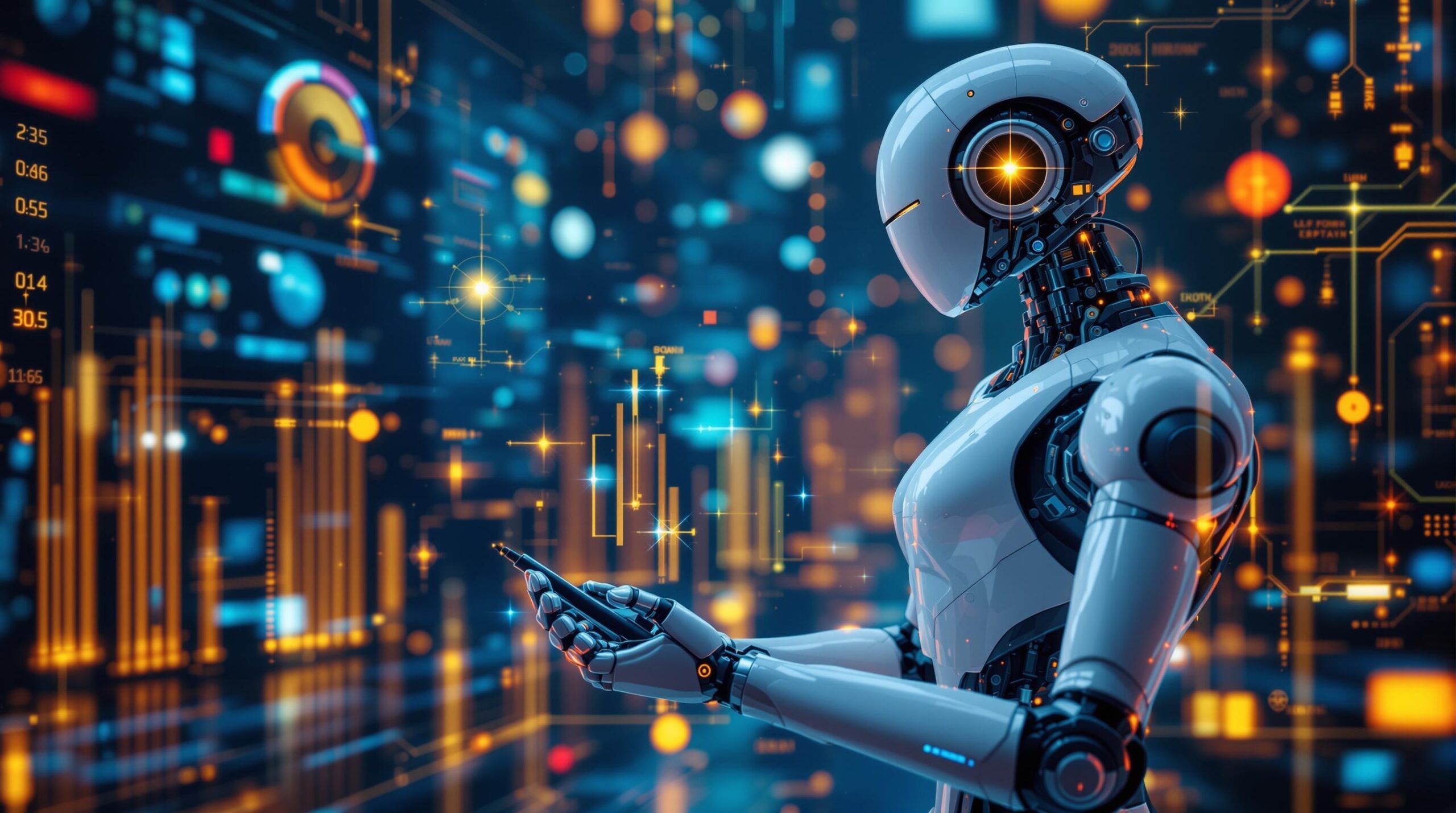
The Rise of Collaborative Robots: Human-Machine Partnerships
The collaborative robot (cobot) sector is experiencing explosive growth, with projections indicating cobots will account for 35% of all robot sales by 2027. Unlike traditional industrial robots that operate in isolation, cobots are designed to work alongside humans safely and effectively.
Universal Robots has pioneered cobots featuring force-limiting sensors and no-code programming interfaces, reducing setup time by 50% for small and medium enterprises. This accessibility has democratized robotics, allowing smaller businesses to compete with larger corporations. SMEs implementing cobots typically report 20-30% reductions in labor costs while maintaining production quality.
The economic case for cobots is compelling when comparing costs: cobots average between $50,000-$80,000, while traditional industrial robots start at $150,000+. Modular designs like Robotnik’s RB-THERON offer multi-industry adaptability, allowing businesses to reconfigure robots for different tasks rather than purchasing separate specialized machines.
These machine learning enhanced robots are creating new paradigms for human-machine collaboration across manufacturing, healthcare, and service industries.
Digital Twins and Simulation: Virtual Testing, Real Results
Digital twin technology is revolutionizing how robots are designed, tested, and deployed, with adoption growing at a staggering 61.3% CAGR and projected to reach $110.1 billion by 2028. These virtual replicas allow engineers to simulate robot performance in various scenarios before physical deployment.
BMW exemplifies this approach, using digital twins to simulate entire assembly lines and cutting prototyping costs by 40%. The integration of AR/VR technology, such as Siemens and Sony’s VR headset solution, enables engineers to troubleshoot issues in real-time via digital twins without physically intervening with the equipment.
The operational benefits are substantial:
- 30% faster troubleshooting of mechanical issues
- Reduced commissioning timelines from 6-12 months to just 2-4 months
- Ability to stress-test robots in virtual environments that would be dangerous or impossible in reality
Digital twins in robotics represent a fundamental shift in development methodology, allowing for continuous improvement through virtual iteration before physical implementation.
Autonomous Mobile Robots: Reshaping Logistics and Agriculture
Autonomous Mobile Robots (AMRs) are set to handle 25% of last-mile deliveries by 2030, transforming logistics networks globally. These robots utilize advanced LIDAR and AI vision systems, like those in Fetch Robotics’ Freight 1500, which have demonstrated the ability to reduce collision rates by 90% compared to earlier generations.
The agricultural sector is experiencing particularly rapid adoption. John Deere’s See & Spray robots use AI targeting to reduce herbicide use by 80%, simultaneously lowering costs and environmental impact. These precision agriculture applications are proving that robotics can advance both productivity and sustainability goals.
However, regulatory frameworks aren’t evolving uniformly across all sectors. Medical AMRs face stricter oversight and slower approval processes, while e-commerce applications like Walmart’s Alphabot system are deployed more rapidly. This regulatory disparity is creating uneven adoption rates across industries despite similar underlying technologies.
Humanoid and Service Robots: The Next Frontier
Service robots represent the fastest-growing segment of the robotics market, projected to reach $170 billion in sales by 2030 and surpass industrial robots in market value. The development of humanoid robots like Tesla’s Optimus and Agility Robotics’ Digit are being piloted in automotive manufacturing and warehousing operations.
Beyond industrial applications, therapeutic robots like Japan’s PARO have demonstrated the ability to reduce patient anxiety by 35% in hospital settings. These specialized healthcare applications show how robots are expanding beyond traditional industrial roles into more human-centered service functions.
Return on investment remains challenging for general-purpose humanoids, with costs averaging $250,000 compared to $80,000 for task-specific cobots. However, specialized applications like the disaster-response robots deployed at Fukushima demonstrate the value of humanoid robots in environments too dangerous for human workers.
Healthcare Robotics: Surgical Precision and Hospital Efficiency
The healthcare robotics sector is experiencing rapid advancement, with Intuitive Surgical’s da Vinci system having performed over 12 million procedures and reducing patient recovery time by 30%. Beyond surgery, hospital logistics robots like the TUG delivery system cut nurse workload by approximately 2 hours daily, allowing clinical staff to focus on patient care.
Remote surgery trials, such as those conducted by Corindus Vascular Robotics, have achieved 99% accuracy rates, opening possibilities for specialist care delivery to underserved areas. However, significant cost barriers remain – a single da Vinci surgical system costs approximately $2 million, and insurance reimbursement frameworks haven’t fully adapted to robotic procedures.
More affordable options are emerging to address these challenges. Companies like EndoCure are developing lower-cost robotic arms for imaging applications, helping to democratize access to robotic healthcare technologies for smaller hospitals and clinics.
Sustainable Robotics: Green Manufacturing and Energy Efficiency
Sustainability has become a central focus in robotics development. Companies like ABB are pioneering recyclable materials such as specialized aluminum alloys in robot arms, reducing carbon footprints by approximately 15%. Simultaneously, power efficiency improvements, exemplified by Boston Dynamics’ Spot robot consuming 20% less power than previous models, are reducing operational energy requirements.
Robotics is also enabling green technology production. Automated systems for solar panel and EV battery manufacturing have reduced production waste by 25%. Regulatory frameworks like the EU’s Circular Economy Action Plan are accelerating these improvements by establishing standards for product design and recyclability.
Tesla’s Gigafactories provide an instructive case study in sustainable robotics. Their zero-waste battery assembly processes use robots to achieve precision that minimizes material waste while maximizing production efficiency, demonstrating how automation can advance environmental goals alongside economic ones.
Economic Impact: Job Transformation and Market Growth
The robotics revolution will substantially reshape employment landscapes. While 20 million manufacturing jobs are projected to be lost by 2030, approximately 12 million new roles will be created in robot maintenance, programming, and oversight. This represents a significant shift in required skills rather than simply job elimination.
The overall robotics industry is projected to grow from $76 billion in 2023 to $218 billion by 2030. Regional distribution of this growth shows the Asia-Pacific region maintaining dominance with 45% market share, driven largely by China’s rapidly expanding $7.24 billion AI-powered robotics sector.
Preparation for this transition varies globally. Germany’s Industry 4.0 vocational programs represent leading examples of proactive workforce development, while concerns persist about wage stagnation risks in low-income countries with fewer reskilling resources. For emerging robotics companies, open-source software platforms like ROS 2 are reducing development costs by approximately 40%, enabling broader participation in the robotics economy.
